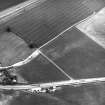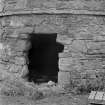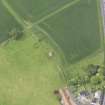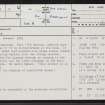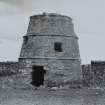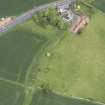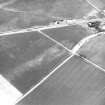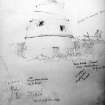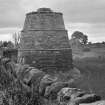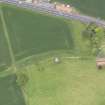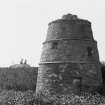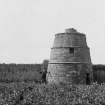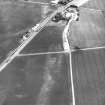Dolphingstone Doocot
Dovecot (17th Century)
Site Name Dolphingstone Doocot
Classification Dovecot (17th Century)
Alternative Name(s) Dolphington; Cowthrople
Canmore ID 53654
Site Number NT37SE 14
NGR NT 38175 72756
Datum OSGB36 - NGR
Permalink http://canmore.org.uk/site/53654
- Council East Lothian
- Parish Prestonpans
- Former Region Lothian
- Former District East Lothian
- Former County East Lothian
NT37SE 14 38175 72756
(NT 3817 7275) Dovecot (NR)
OS 1:10000 map (1973)
Dovecot, Dolphingstone: This 17th century, beehive type dovecot measures 51ft in circumference at the base. It has a flattish domed roof covered with stone slabs; random rubble wall, partly harled, with two string courses. There is an entry for pigeons through an opening in the centre of the roof, and two other openings in the wall, about 2ft square. No nests remain. This dovecot is in fair repair (D C Bailey and M C Tindall 1963). (See NT37SE 7 for remains of associated house).
RCAHMS 1924, visited 1914; J Whitaker 1938; C McWilliam 1978
This dovecot is as described by the previous authorities.
Visited by OS (SFS), 26 August 1975.
EXTERNAL REFERENCE:
Scottish Record Office:
Contract between Robert Geddes, Scotston and James Somerville, mason in Lintoun, for a Dovecot 16' long and 14' wide with 560 holes.
1735 RH15/70/40
3-stage beehive dovecot. Sandstone rubble. Pair of thumbnail-bead rat courses dividing stages; evenly arranged water-spouts at cornice level. Doorway at SE. Pair of square openings, randomly arranged, to middle stage, at SE.
The first dovecots built in Scotland were the beehive dovecots that appeared in the 16th century, typically circular-plan conical structures with pigeon access to the central chamber by means of an oculus opening at the building's apex. The Dolphingstone Dovecot, originally in the policies of the late 17th century, now ruined, Cowthrople House, has the remains of a glover (cupola) evident on its roof, and like the dovecot at Preston Tower has evidence of shells being used in the structure's mortar.(Historic Scotland)
Field Visit (4 May 1914)
About 150 yards south of the Edinburgh to Haddington high road and about 1 ¼ miles south-southwest of Preston is a fragment of a dwelling dating from the late 17th century. The structure has evidently been of considerable size with its major axis lying east and west. Only a portion of one wall remains, but this shows that the basement apartments were covered with a stone barrel vault and lit by narrow slits 5 inches wide and 2 feet high. The upper floor windows were large, and their jambs have back-set margins, indicating that the building was roughcast. The ruin stands within an area enclosed by a high wall apparently contemporary, at the north side of which is a circular Dovecot in three stages 51 feet in girth at base.
HISTORICAL NOTE. In 1680 Richard Ward (‘Ricardus Waird’) was entered as heir of his father of the same name in the barony of Dolphinstoune, formerly called ‘Colthrople’ within the parish of Saltprestoune. Three years later Elizabeth Ward appears as successor to her brother Richard in the same property (Inquis. Spec. Hadd. Nos. 339, 346).
RCAHMS 1924, visited 4 May 1914.
Photographic Survey (September 1960 - 1962)
Photographic survey of dovecots in East Lothian by the Scottish National Buildings Record in 1960-1962.
Photographic Survey (September 1961)
Photographic survey by the Scottish National Buildings Record in September 1961.



















